
Successful_Nick/iStock/Getty Images
Paddlefish are North American river fish that live in waters in the Mississippi Valley and down to the gulf areas near Texas and Louisiana. This species of fish is similar in appearance to swordfish with large mouths and paddle-like appendages off the front of their faces. Paddlefish can grow to weigh up to 60 pounds and measure up to 5 feet. Similar in taste to swordfish, give paddlefish a try as a new variety of fish in your diet.
Heart Healthy
Eating baked or broiled fish as part of your regular eating plan may help reduce your risk of heart problems. The omega-3 fatty acids in fish can help protect the heart against the development of dangerous cardiac rhythm disturbances, as well as help lower blood pressure, improve blood vessel function and may ease inflammation, notes the Harvard School of Public Health website. Opting for paddlefish in place of beef, chicken or pork is also a way to reduce your overall intake of saturated fat, which can increase your risk of heart disease.
Drawbacks of Paddlefish
The bad news is that one of the most popular ways to eat paddlefish is by deep frying it. This is a health drawback because any fried fish is high in unhealthy saturated fats. Another major drawback to making paddlefish your fish of choice is that they are not considered a sustainable species. Paddlefish are over-farmed, which means that the population has decreased significantly, partly due to the popularity of caviar made from paddlefish eggs. If you are concerned with ecosystems in your area, paddlefish may not be the best choice for you.
Paddlefish Nutrition
Like most fish, paddlefish are a healthy source of protein that is also lower in fat and calories than other types of meat, such as beef or pork. The paddlefish is a type of sturgeon, which is also a healthy source of phosphorus and potassium, as well as vitamin A. While the caviar from paddlefish is high in protein and omega-3 fatty acids, it also contains a significant amount of sodium and fat.
Healthy Cooking
Paddlefish is a large fish that can be cut into steaks and broiled as a nutritious way to get the protein, vitamin and mineral benefits it has to offer without additional fat. Marinate paddlefish steaks for two hours in your favorite fish marinade, which might include soy sauce, white wine vinegar, crushed garlic and brown sugar, and then broil the steaks until they are firm and flake easily with a fork, flipping halfway through cooking. Boil the marinade until it reduces by half and brush it on the fish during the last two minutes of broiling.
Related Articles

Substitutes for a Tuna Steak

How to Pan-Sear Swordfish

How to Cook Kobe Steaks
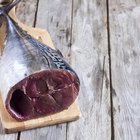
How to Smoke Tuna

How to Grill Tuna Steak
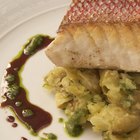
What Are the Health Benefits of Red ...

How to Cook Ahi Tuna on a Frying Pan
How to Cook Buffalo Fillet

How to Cook Moose Steaks

Types of Mild White Fish
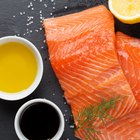
Calories in Wild Alaskan Salmon

How to Fillet a Goliath Grouper
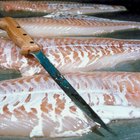
How to Grill a Cod Fish

How to Eat Alligator

How to Cook Bear Steaks

How to Cook Walleye by Broiling

How to Cook Trevally

Health Benefits of Lox Vs. Baked Salmon

How to Cook a Bullhead Fish
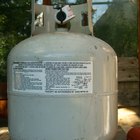
How to Barbeque a Brisket on a Gas Grill
References
- United States Geological Survey; Frequently Asked Questions
- Harvard School of Public Health: Fish: Friend or Foe?
- USDA Nutrient Database; Nutrient Data Laboratory
- "The Freshwater Fish Cookbook: More Than 200 Ways to Cook Your Catch"; A. D. Livingston; 2008
- Environmental Defense Fund; Paddlefish Caviar
Writer Bio
Sara Ipatenco has taught writing, health and nutrition. She started writing in 2007 and has been published in Teaching Tolerance magazine. Ipatenco holds a bachelor's degree and a master's degree in education, both from the University of Denver.
Photo Credits
Successful_Nick/iStock/Getty Images